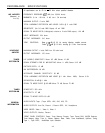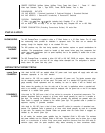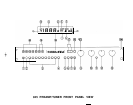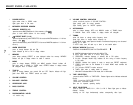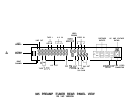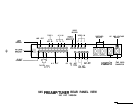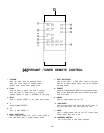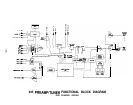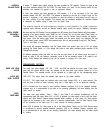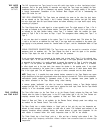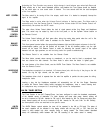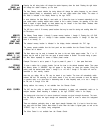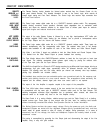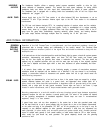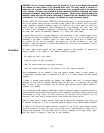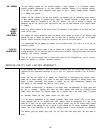
FM ANTENNA
WARNING: The use of ground adaptors (with the ground tab or wire of the adaptor disconnected)
will eliminate the safety feature of the grounded power cord. This safety feature is intended to
reduce the risk of electric shock-should an internal fault in the equipment result in an electrically
“live” chassis. Therefore, this method of ground isolation should be employed only when
absolutely necessary, rather than as a general practice.
When using a ground adaptor for
isolation, make sure that the power cord plug is inserted into the receptacle in the same
orientation as if no adaptor were present, to maintain the same hot/neutral polarity.
SPECIAL NOTE ON VIDEO CABLE “GROUNDS”: As mentioned above, the ground conductor of cable
service and antenna feeds should be connected to earth ground. Often, however, due to long feed
lengths, especially in apartment distribution systems, this ground will be of poor quality and could be a
source of noise. This interference is usually characterized by a high frequency noise, rather than a hum
or a buzz. If such interference is experienced, a separate earth ground connection should be made from
the cable outlet nearest the audio/video equipment to a known good earth ground.
If ground loops exist due to potential differences in the interconnects in rack mounted systems, then it
is advisable to isolate the preamplifier chassis from the rack rails. This may be accomplished by
sandwiching a thin sheet of insulating material (i.e., plastic washers or several layers of electrical tape,
etc.) between the rack and the preamplifier, and securing the unit with non-metallic (i.e., nylon, etc.)
hardware. It may be necessary to insulate other components so that only one component is directly
connected to the rack rails.
The ribbon dipole antenna supplied will offer excellent reception in most situations. To maximize the
reception potential of this antenna, a few guidelines should be followed:
-
fully extend the “arms” of the dipole
-
mount the antenna as high as possible
-
mount the antenna away from large metal structures
-
orient the antenna perpendicular to the direction of the radio station’s transmitter.
Some experimentation will be necessary in less than optimum reception areas, or where reception of
a distant station is desired. Often, an adjustment of a foot or so in antenna position can affect reception
noticeably.
A number of alternate indoor antennas are available, from traditional “rabbit ears”, to antennas designed
specifically for high quality FM reception. Although these units offer little or no advantage over the ribbon
dipole in terms of gain or directivity, they are typically table mounted, offering greater flexibility in
placement and mobility.
For the ultimate in FM reception, especially in difficult reception areas, an outdoor antenna is
recommended. There are two basic types of “poor” reception conditions. Urban areas may be
characterized by strong signals, but those signals can be interfered with by reflections from tall
structures. Rural areas may be characterized by weak signals from distant stations.
There are many types of outdoor antennas. Some may be optimized for directionality, while others may
be optimized for high gain. It is best to seek local advice for analysis of your specific reception conditions.
In addition to the 300 ohm FM antenna terminals, a standard
"F"
type 75 ohm coaxial antenna connector
has been provided. The use of this input, using coaxial cable, is recommended for outdoor use, to
minimize noise interference. This input should also be used for connections to FM cable services. Again,
seek local advice for choosing a cable type for your application.
-18-



